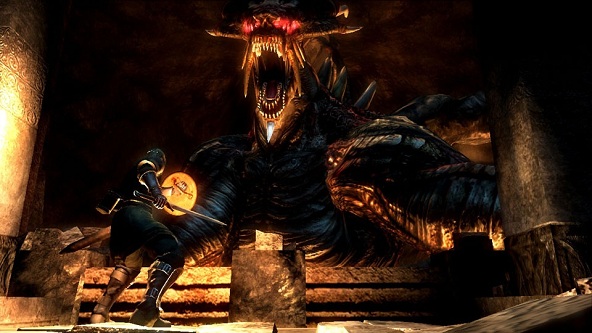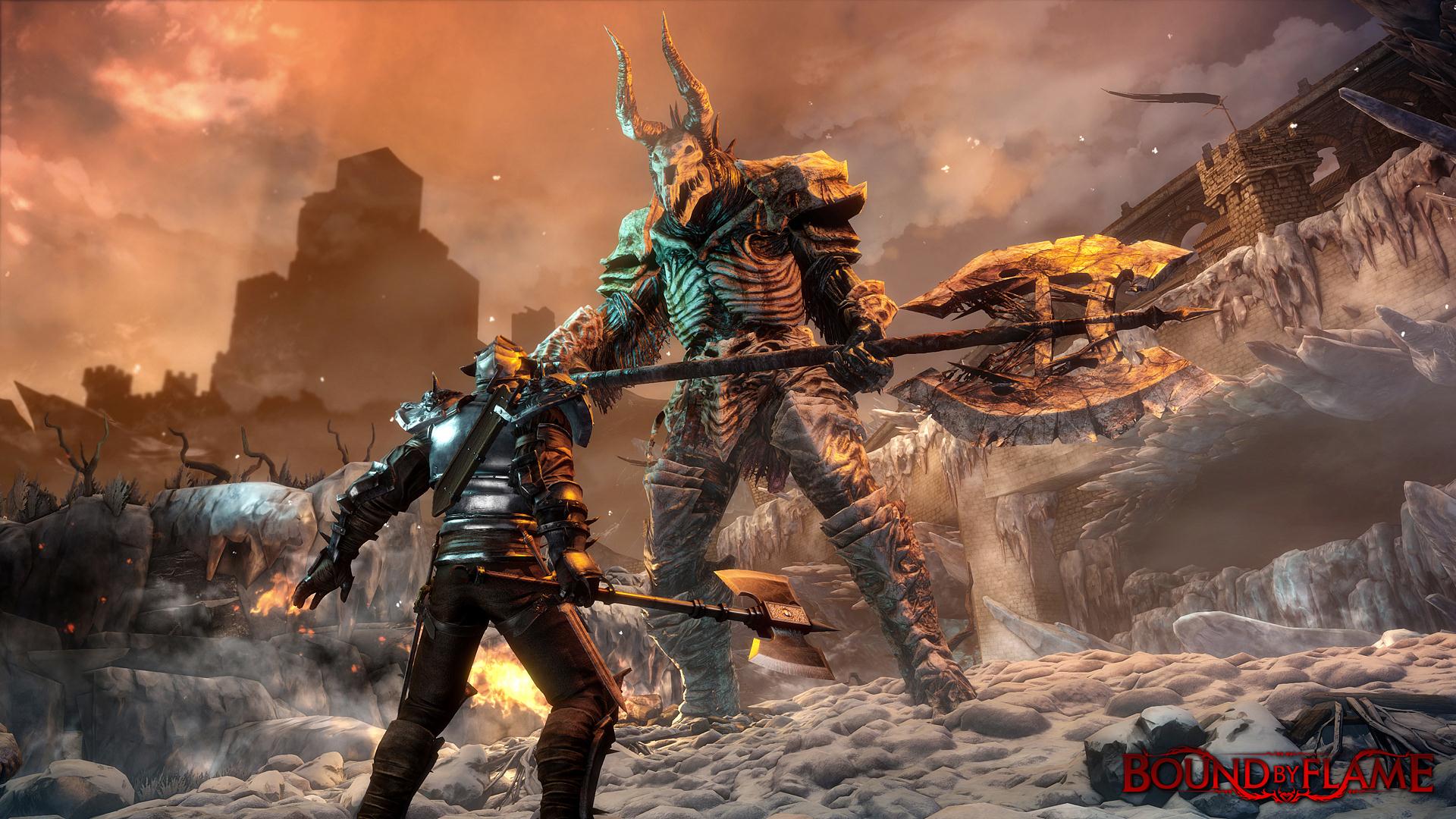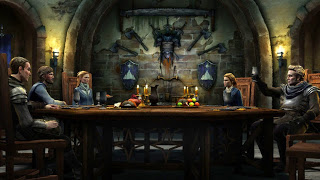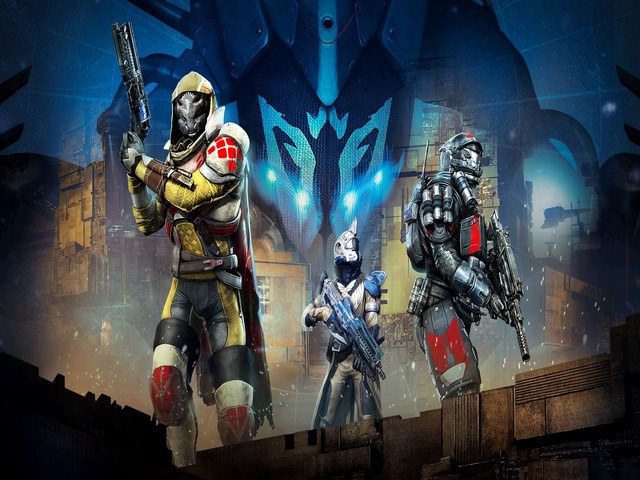

Conception 2: Children of the Seven Stars is its own worst enemy. It understands and improves upon the fundamentals of dungeon-crawling to make this an enjoyable new entry in the JRPG genre. Then it puts a damper on the fun by progressing the story via suggestive conversations with 17-year-old girls. The gratuitous dating sim sex appeal continually gets in the way of the role-playing action, holding back the game from true greatness no matter how well it executes the less-risque aspects.
Though the original Conception was never localized, Conception 2 is easy to get into without feeling like you’re missing key information. Mankind is rebuilding after armies of monsters laid waste to much of Earth, giving a dark backdrop to the more lighthearted proceedings. The protagonist, given the moniker God’s Gift, arrives at a high school that doubles as a training facility for demon hunters, and he and his school chums are quickly pulled into battle. It’s not entirely original, but it’s as good an excuse as any to fight your way through hordes of monsters in typical, Japanese role-playing style.
This setup is introduced at the same time as the more risque--and wholly unavoidable--story elements. The “Conception” in the title is literal, because God’s Gift magically creates demon-slaying Star Children with his young, female classmates. That's right: you hook up with young girls in a process referred to as Classmating to produce Pokemon-style warriors, clerics, and other battle-ready offspring. The on-screen ritual briefly shows the couple holding hands before it cuts away to a new Star Child popping out of a Russian nesting doll, and the script gets a lot of mileage by implying what’s really going on during this sacred rite. But this all has a deeper purpose beyond some quick gags. Each woman imparts different attributes to the Star Child she creates, which gives players more options for specializing their personal team of dungeon runners.
Conception 2 is at its best when you're exploring dungeons, fighting alongside these tykes in battle. The game is bursting with randomly generated, multi-floor Labyrinths for genre devotees to dive into, and the gameplay’s style will be especially familiar to anyone who has played recent Persona and Shin Megami Tensei RPGs. Conception 2 borrows heavily and rather blatantly from those specific games, especially the battle interface, the offbeat enemy designs, and those games’ approach to dungeon layout. Even so, Conception 2 understands those concepts beyond a surface level, subtly tweaking those mechanics to enrich its gameplay in similar ways that still stands out from pretty much every other JRPG.
For all its influences, Conception 2 adds a number of its own smart additions that are steadily revealed over the campaign. You must strategically place your team around enemies, choosing whether to safely attack their weak points or face the beasts head-on to quickly charge up bonus attacks. The risk/reward at play adds tactical density to random battles, sidestepping the repetition that’s usually associated with average enemy encounters. You also have a ton of options for building teams that take time and nuance to properly craft, rewarding players that study Conception 2's many systems. Even exploring the overworld has novel ideas to experiment with, like finding new items in the shop, investigating potential side quests in the lab, or discovering new dangers in previously beaten dungeons. The more you play, the more you see of Conception’s hidden depth.
A downside to all that nuance is that it requires a lot of explanation. Right from the start you’ll have dozens of tutorials thrown at you to describe Conception’s many special qualities. These long text guides are necessary, in particular for people less familiar with JRPGs--though even experienced players will suffer a barrage of explanation throughout the first few hours. Stick with it long enough and you’ll learn by doing, eventually incorporating the once-daunting information into your playstyle.
Outside of the dungeons, the racier half of Conception 2’s content will be the make-or-break point for most players. The game requires you to befriend a handful of cute girls, like Nariko, the timid-yet-buxom student leader, and Serina, who looks distressingly young despite technically being older than the protagonist. It objectifies the women to an extent, via increasingly intimate conversations and gift giving until they like you enough to take the relationship to the next level, which in turn creates stronger Star Children to take into battle. It’ll please a certain demographic that’s looking to engage in sensual minigames with virtual teens, but it really hurts Conception 2 in the long run. These lengthy, objectionable sections don’t invalidate the straightforward RPG action within, but many players will be pushed away the moment they engage in conversation--one packed with inappropriate boob jokes--with a high school girl.
The unfortunate fact is that Conception’s two genres go hand-in-hand. To get the most out of dungeon gameplay, or to simply progress the story, you’re going to have to do your best to get friendly with the game’s virtual ladies. You’ll hear numerous awkward jokes about some characters’ breast sizes, see the cliched perverted-old-man trope pop-up unwantedly, and be treated to numerous shots of the leads in skimpy outfits--all in the name of fighting the boss of the next Labyrinth. If that’s what you’re into, have at it, but it’s a lot to ask of some players that prefer better-than-average JRPGs to treat women with a little more respect.




 Bound by Flame: Randval Quest Problems (Solved)
Bound by Flame: Randval Quest Problems (Solved) Game of Thrones: Episode 4 review
Game of Thrones: Episode 4 review Marvel Avengers Alliance Guide
Marvel Avengers Alliance Guide Destiny Wanted Bounty Location Guide For June 7-June 13, Six Old Bounties Returns
Destiny Wanted Bounty Location Guide For June 7-June 13, Six Old Bounties Returns Driver: San Francisco Walkthrough
Driver: San Francisco Walkthrough